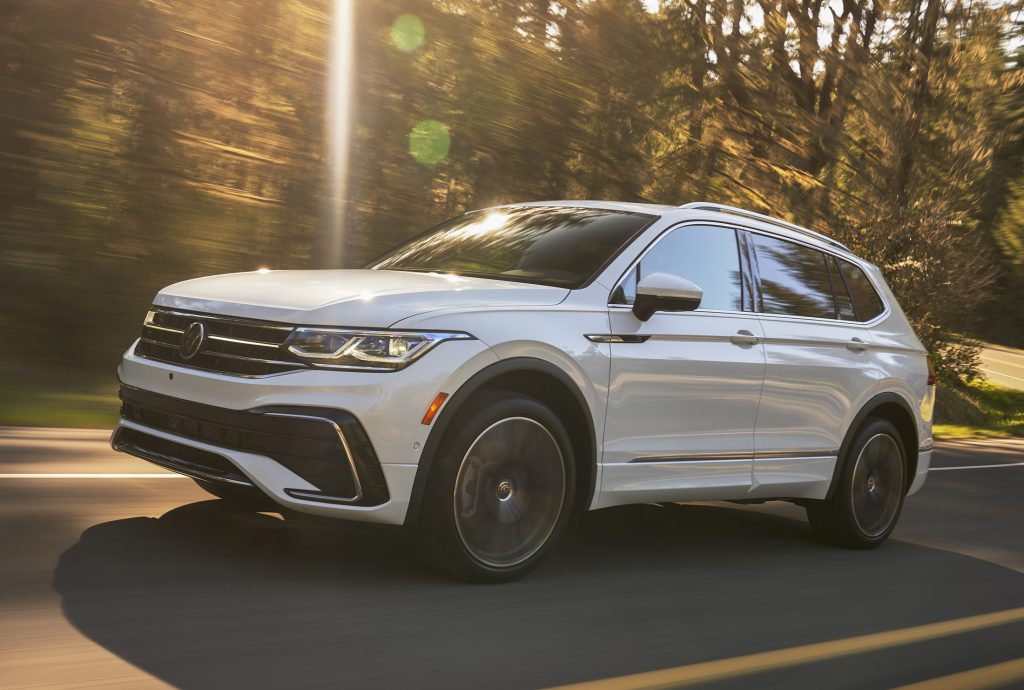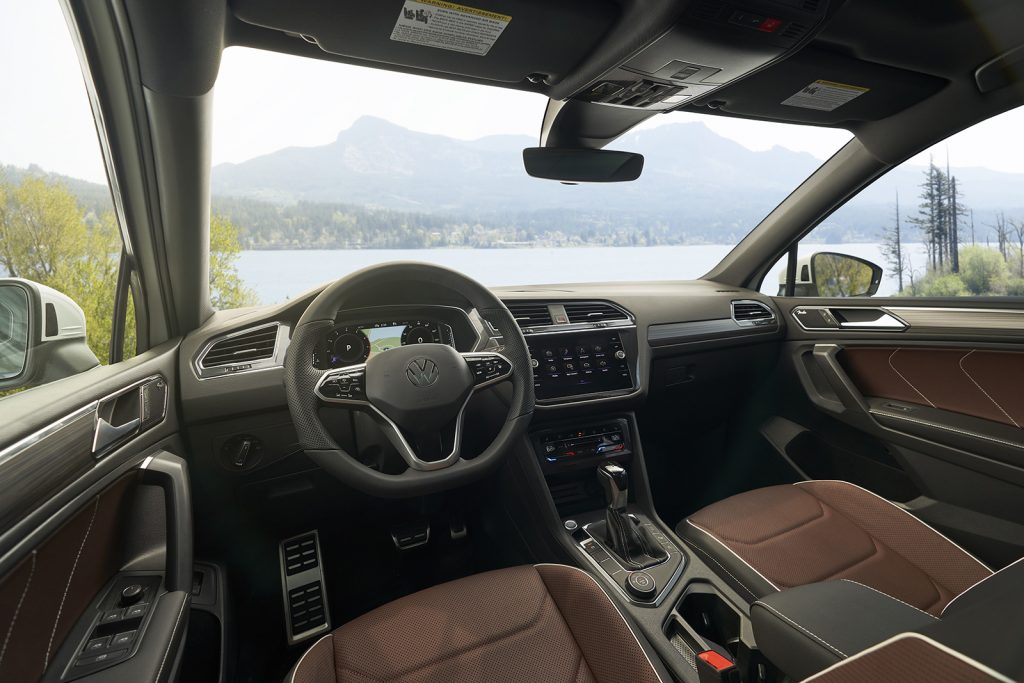Cargazing
By Derek Price
It’s interesting that Volkswagen’s best-selling vehicle is this one.
The Tiguan is a crossover, the most bland, derivative, cookie-cutter style of vehicle sold today — and also the most popular with buyers. VW, though, has spent decades building its brand reputation on being individual, different and fun, which is basically the opposite of every modern crossover.
How can this be?
The Beetle is no more, replaced by legions of Tiguan buyers who value practicality over spunk and originality.
An overhaul for 2022 tries to inject a bit more of that classic VW feel into the Tiguan, including the way it looks. Up front, its face looks more closely related to the brawny Atlas now, while the back end gets fresh LED tail lights and classy, spaced-out lettering.
The driving feel remains distinct in the segment, but in a subtle way. Power comes from a 2.0-liter, turbocharged, four-cylinder engine that feels like it belongs in the diminutive Golf more than something that tries to mimic the titanic Atlas. Its 184 horsepower is adequate, not exciting, just like its countless competitors.

Refreshed styling helps keep the Volkswagen Tiguan competitive in the compact crossover market. The Tiguan is VW’s best-selling vehicle, both in the United States and worldwide.
Its listed torque, 221 pound-feet, is much more impressive, and you can feel it when you first hit the gas pedal. The Tiguan lunges forward with an eagerness that many of today’s crossovers lack.
Inside, it focuses on another classic VW selling point: value.
The VW Digital Cockpit, which replaces traditional analog gauges with an LCD screen behind the steering wheel, is now standard equipment on every Tiguan. The top-level trim gets a screen a couple of inches larger.
Other standard features include push-button start with keyless entry, heated front seats and LED headlights. Even the base Tiguan lets you select different driving modes and comes with sensors to help prevent collisions in the front and sides.
One unusual thing about it is the interior layout that varies with the drivetrain.
If you choose the front-wheel-drive Tiguan, you automatically get three rows of seats. VW manages to squeeze in just enough space for some extra passengers in a pinch.
If you choose all-wheel drive, though, you only get two rows of seats standard. It leaves a generous amount of cargo space in back instead.

Volkswagen’s Digital Cockpit is now standard equipment on every Tiguan. It replaces traditional analog gauges with a customizable digital display behind the steering wheel.
Volkswagen’s Travel Assist system on my tester worked as expected, controlling the vehicle’s speed and keeping it centered in lanes with little driver input. You still have to maintain awareness and keep some pressure on the steering wheel, but it does make driving for long periods of time, even in stop-and-go city traffic, more effortless.
Pricing is perhaps the Tiguan’s strongest point.
It starts at $25,995 for the base S model with front-wheel drive, making it extremely affordable for a three-row crossover.
The 4Motion all-wheel-drive version starts at $27,495, but again, you sacrifice the third row when you buy it. It doesn’t feel like quite as good a bargain because of that, but people who need the capability and confidence of AWD traction can still benefit from the choice.
Pricing tops out at $36,595 for the AWD SEL R-Line trim with more upscale content and sporty styling.
At A Glance
What was tested? 2022 Volkswagen Tiguan 2.0T SE ($30,995). Options: Premium paint ($395). Price as tested (including $1,195 destination charge): $32,595
Wheelbase: 109.9 in.
Length: 186.1 in.
Width: 72.4 in.
Height: 66.5 in.
Engine: 2.0-liter turbocharged four cylinder (184 hp, 221 lbs.-ft.)
Transmission: Eight-speed automatic
Fuel economy: 22 city, 29 highway
RATINGS
Style: 7
Performance: 6
Price: 10
Handling: 8
Ride: 5
Comfort: 6
Quality: 6
Overall: 7
Why buy it?
It puts VW’s spin on the popular crossover formula. A lot of standard features, including third-row seats in front-wheel-drive versions, make it a great value.
